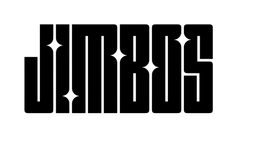The Ultimate Clay Bar Guide: How to Clay Your Car Step-by-Step
If your car feels rough after washing, lacks gloss, or isn’t beading water like it used to — it’s probably time for a clay bar treatment. Claying removes bonded contaminants that washing alone can’t touch, restoring smoothness and prepping your paint for polishing or protection.
In this complete guide, we’ll cover what clay bar decontamination is, how to do it safely, and which products you need for professional results at home.
What Is a Clay Bar?
A clay bar is a detailing tool that pulls embedded contaminants out of your clear coat — things like brake dust, rail dust, tree sap, overspray, and industrial fallout. These particles get stuck in your paint and won’t come off with soap or shampoo alone.
Learn more: What Is a Clay Bar?
How to Tell If Your Car Needs to Be Clayed
Use the baggie test: put your hand inside a sandwich bag and gently run it across the paint. If it feels gritty, rough, or bumpy, you’ve got embedded contamination.
Other signs include:
- Visible black/orange specks on the paint
- Water sheeting slowly or unevenly
- Lack of gloss after washing
See the full list of signs your car needs claying
Clay Mitt vs Traditional Clay Bar
Both remove contamination, but clay mitts are easier to use, faster, and reusable. Clay bars are better for precision work or extremely contaminated areas but must be discarded if dropped.
Compare: Clay Mitt vs Clay Bar
Step-by-Step: How to Clay Your Car
- Wash the car first. Use a high-lubricity soap like The Super Soaper to remove dirt and minimize scratching.
- Apply clay lube. Dilute The Super Soaper in a foamer or spray bottle and apply generously to a small section.
- Use light pressure. Glide the mitt or bar across the panel in straight lines. You’ll feel it smooth out.
- Wipe with a microfiber towel. Use a clean microfiber to remove residue after each section.
- Seal the paint. Always protect the paint with Tough As Shell or your preferred wax/coating.
Full Step-by-Step Clay Bar Guide
Clay Your Car Like a Pro
- The Super Soaper – clay-safe lubrication and foam pre-soak
- Everyday Microfiber Towels – safe for paint, no lint or marring
- Tough As Shell – seal the paint for 6+ months
Thousands of detailers use this exact combo for reliable, swirl-free results.
Common Mistakes to Avoid
- Claying a dirty car (always wash first)
- Using too little lubrication
- Applying too much pressure
- Dropping the clay and continuing to use it
- Skipping protection afterward
Read: Top Mistakes to Avoid When Claying
Should You Polish After Claying?
Not always. If your paint looks great after claying and you don’t see any light marring, you can go straight to protection. But if you want maximum gloss or see light defects, a one-step polish like Picture Perfect Polish will take your results to the next level.
Can You Clay a Ceramic Coated Car?
Yes, but you must be gentle. Use a clay mitt, lots of lubrication, and light pressure. Follow with a ceramic booster like Tough As Shell to refresh performance.
Frequently Asked Questions
- How often should I clay my car? Every 6–12 months depending on driving conditions and contamination.
- Do I need to polish after claying? Only if you want to improve gloss or remove light marring. Not required.
- Can I use any soap as clay lube? No — use a slick, non-drying soap like The Super Soaper, diluted properly.
Related Posts
- Should You Polish After Claying?
- What to Do After Clay Bar Treatment
- Best Products to Use During Claying



